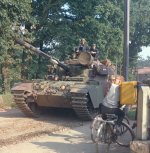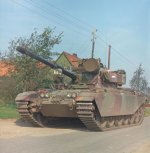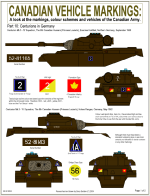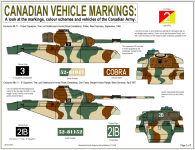GINge!
Full Member
- Reaction score
- 2
- Points
- 380
Fellas, my google has failed. I'm looking for the significance of this pennant stenciled on a the turret bin of a Canadian Centurion tank. Timeframe c1966 may put it as a LdSH(RC) tank supporting 2 Div (UK), BAOR, although it may be a 4 CMBG tank if the NDIL info inaccurate.
Considering WW2 pennants, the single one indicates a Troop Leader, the red indicates A Sqn, and the white indicates 5th troop. I don't think this can be applied since the tank name starting with a B typically denotes B Sqn, and I believe that WW2 practice was applied to actual flying pennants from aerials.
Moreover, there is a blue bar under the pennant.
I know the LdSH(RC) mounted troop fly this exact pennant from the lance tip, so that may be a clue?
Considering WW2 pennants, the single one indicates a Troop Leader, the red indicates A Sqn, and the white indicates 5th troop. I don't think this can be applied since the tank name starting with a B typically denotes B Sqn, and I believe that WW2 practice was applied to actual flying pennants from aerials.
Moreover, there is a blue bar under the pennant.
I know the LdSH(RC) mounted troop fly this exact pennant from the lance tip, so that may be a clue?






